
Students will learn how to design 3-Dimensional objects using Tinkercad.
- Subject:
- Arts Education
- STEM
- Material Type:
- Activity/Lab
- Lesson
- Author:
- JEANNIE TIMKEN
- Date Added:
- 11/18/2021

Students will learn how to design 3-Dimensional objects using Tinkercad.

Using the materials- balloons, straws, string, tape, and weights students will design a rocket that will travel to a certain distance such as between 4 and 5 meters. Students will measure the distance of their attempts and record results. They will design a balloon rocket that will travel to the target area and not beyond by discovering the relationship between force and mass.

This lesson combines the science standards for force and motion with an engineering activity. Students will design a car from cardboard straws. Coffee stirs tape, balloon, and bottle lids. ( students can choose which types of wheels). Students will race the cars with classmates to determine which is the fastest.

Students will use paper circuits to label various parts of the skeletal system.

In this activity, students are introduced to static equilibrium by learning how forces and torques are balanced in a well-designed engineering structure. A tower crane is presented as a simplified two-dimensional case. Using Popsicle sticks and hot glue, student teams design, build and test a simple tower crane model according to these principles, ending with a team competition.
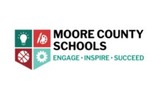
To launch: Read “Albert’s Alphabet” by Leslie Tryon Students will then “build” the letters of their name using provided materials or you can assign groups of students letters, so that the class can “build” the alphabet.
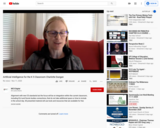
Alignment with new CS standards but the focus will be on integration within the current classroom, including ELA and Social studies connections, that do not take additional space or time to include in the school day. All presented material will use tools and resources that are available for free online.
Link to additional resources:
https://aiforteachers.org/

Students experience the fundamentals of the engineering design process, with a hands-on, critical-thinking, authentic approach. Using collaboration and problem-solving skills, they develop a mission to search for life in the Solar System that meets constraints (budget, mass, power) and criteria (significant science return).

This game board is a supplemental resource to be used with the lesson "Astrobiobound!" In this fun, interactive card simulation, students experience the fundamentals of the engineering design process, with a hands-on, critical-thinking, authentic approach. Using collaboration and problem-solving skills, they develop a mission to search for life in the Solar System that meets constraints (budget, mass, power) and criteria (significant science return).

This handout provides the game cards and is a supplemental resource to be used with the lesson "Astrobiobound!" In this fun, interactive card simulation, students experience the fundamentals of the engineering design process, with a hands-on, critical-thinking, authentic approach. Using collaboration and problem-solving skills, they develop a mission to search for life in the Solar System that meets constraints (budget, mass, power) and criteria (significant science return).

This presentation is a supplemental resource to be used with the lesson "Astrobiobound!" In this fun, interactive card simulation, students experience the fundamentals of the engineering design process, with a hands-on, critical-thinking, authentic approach. Using collaboration and problem-solving skills, they develop a mission to search for life in the Solar System that meets constraints (budget, mass, power) and criteria (significant science return).

Students will perform autopsies on and test fluid in a large dill pickle; to practice dissection skills.
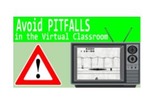
In this session, we will highlight common pitfalls to avoid in the virtual classroom. I will introduce to attendees a variety of digital tools that can make virtual learning a bit easier for everyone involved.
Links to session resources:
https://docs.google.com/presentation/d/1XT6zoEB3_y3Q_YomfHoH_SC-fFv2fx0zS9EvIRORblE/edit
https://docs.google.com/document/d/18Cv_kTYgJjjaz7cKWqwF3GJC0o7evbl9ZB3xKFJFtd0/edit
https://docs.google.com/presentation/d/e/2PACX-1vS9fEPZDOYS2nZxJfIrbovlVQgtYBH9KOronb7pUk9IDRbDVyq2Qa-DbaPAaC-2lyEMzRtG5t7zxbBh/pub?start=false&loop=false&delayms=3000&slide=id.p
https://docs.google.com/presentation/d/1tZqTz6mqrWPb2Vk7r2DdF5CxCCuhFDzcR3Suhp-MHXM/edit#slide=id.p
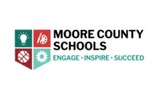
Learners will become paleontologists for a day/week. They will discover this career and undertake the challenge of designing a fossil excavator structure to remove newly discovered fossils stuck in a cave crevice. As a class, graph the results on the amount of weight each structure could lift without breaking

Investigate engineering and create a working prototype using the design thinking process.

Students discover engineering and use the design thinking process to create prototypes to show their learning about engineering.
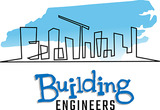
Students are asked to build a nest that will keep a bird and 3 eggs safe. Nest must hold a bird and 3 plastic eggs and balance on tree branch.

Learners will become paleontologists for a day. They will discover this career and undertake the challenge of designing a fossil excavator structure to remove newly discovered fossils stuck in a cave crevice. As a class, graph the results on the amount of weight each structure could lift without breaking.

This session will bring new, integrated ideas and technology know-how to the K-5 teachers. Our goal for the session is to engage students, teachers, and parents, to share sample lessons, substantial amounts of free resources, and ways to integrate tech.
Link to presentation slides:
bit.ly/Literacy2Life